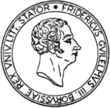“Matador” keyboard adding machine with crank 1906
In 1906, Franz Trinks, engineer and partner at the Brunsviga calculating machine factory in Braunschweig, was granted two patents for a column adding machine called the “Matador”. One version was operated using a setting lever (and crank), while the second used keys and a crank to enter the digits.
The “Matador” keyboard adding machine, which is on permanent loan from the IBM Collection to the Arithmeum, belongs to the keyboard variant. First, a key is pressed and the keyed-in number is transferred to the result unit by turning the crank. What is mechanically interesting about this rather large and robust-looking machine is that it has only one single component to realize all the different digits. This meant that all numbers from 1 to 11 could be transferred to the result mechanism, as the machine was intended for calculating in English currency. Although it was a disk with a variable number of teeth, it was not a classic rung wheel. Instead, a disk was used on which pivoted teeth were mounted, which could be rotated by 90° depending on the number key pressed and then no longer engaged in the result mechanism.
As this mechanism is quite difficult to imagine, computer science student Christina Brod created a 3D animation in her project group work as part of the lecture series on the history of mechanical computing with Professor Dr. Ina Prinz, which provides an insight into this unusual construction. Despite the very innovative ideas that went into this machine, it was not a commercial success and only a few examples have survived.






